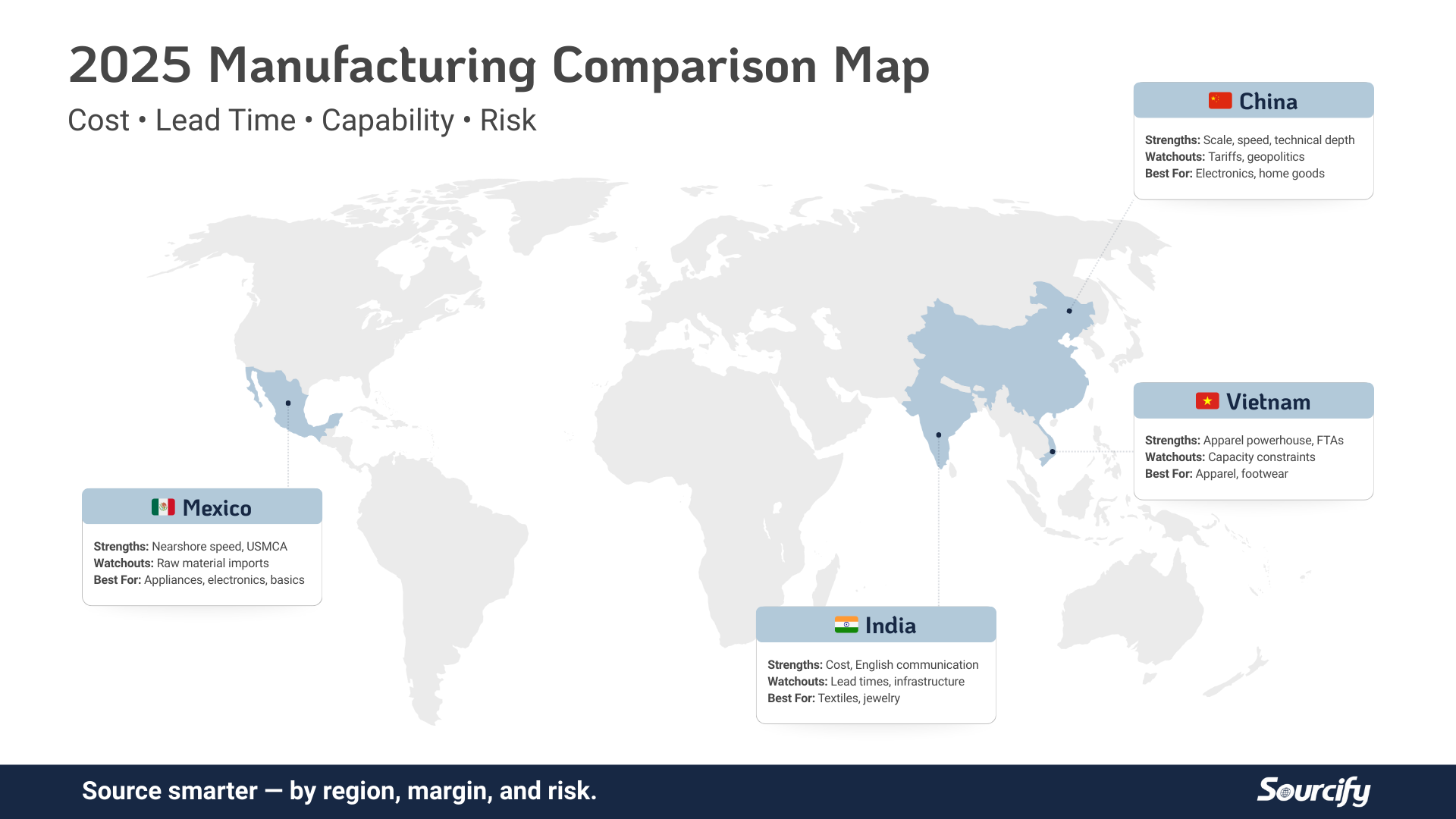You’ve just started an online business. Your timing is impeccable, e-commerce sales are booming right now. What’s next? Oh, yeah, of course: sourcing strategy. This may seem like a daunting task for someone who just decided on their domain name, and you’d be right — it is …
But don’t fret; we’re here to help!
Let others (who have failed in the past) guide you to avoid some common pitfalls. We’ve compiled these tips and tricks from industry leaders to launch you into a successful e-commerce venture. Whether you’re B2B, B2C, C2C, C2B, or somewhere in between, deciding on your sourcing strategy will be critical to the success of your new venture.
First, what exactly is product sourcing, and how is it relevant to your online business? Product sourcing is simply the process of obtaining the product your online business will sell to customers.
There are several methods to do this, including wholesaling, importing, and dropshipping. You’ll need to ask yourself: what type of business do I want? How do I see my company evolving? We won’t cover every method here, but it’s helpful to keep them in mind as you develop your sourcing strategy.
Research, Research, Research, etc.
The first tip for developing a sourcing strategy is straight-forward enough – do your research. In the past, we’ve discussed finding your e-commerce niche. Now that you’ve found that niche, you’ll need to figure out how to bring it to market. That’s where intensive product and consumer research comes in. During this process, you’ll need to study the market, including costs, competition, and your customers.
First, compile a list of suppliers. Determine their prices and other costs associated with delivering the desired product. Next, determine if you can procure the product from a competitor at a better price. In this process, you can begin negotiating with suppliers.
Be prepared: one strategy is to threaten to entice a competitor to flood the market. Get ready to play hardball to get what you want. Finally, you’ll need to know the market demands for the product, so you’ll know exactly how much product the supplier needs to deliver.
You should also gauge your own company’s capacities. What labor and system demands can it handle at this point? How quickly can that change?
Choose Your Supplier
When choosing your supplier, the initial price shouldn’t be the only consideration. Are you establishing a long-term relationship with this supplier? Do all the parties know this?
These are the questions you’ll need to ask during this process. Establishing a long-term, healthy relationships can be beneficial for everyone involved.
The country of origin of your supplier is another consideration. While China is a popular choice, we’ve outlined other potential candidates that could be the right choice for your business, each with unique advantages and disadvantages.
There are several other considerations when choosing a supplier, including:
- Domestic or international?
- In-person or online manufacturer?
- Supplier’s marketing strategy?
- What do their other customers say about them?
There are lots of places to meet suppliers, including trade shows and the internet. Come prepared with a list of questions when you’re conducting supplier interviews. Sourcify can help you with this list. How you source, and with who should be the impetus of your decision.
Select Your Method
Wholesaling, importing, and dropshipping all have their well-documented lists of pros and cons. Should you make or manufacture the product yourself? What do the costs associated with each method look like going forward, especially in the current environment? Should you outsource: by wholesaling or dropshipping?
These are the things you’ll need to weigh when considering a method of sourcing for your e-commerce business. Dropshipping may be the safest of these options, but it will also come with a lower margin. The answer to your question will come from evaluating your goals and where you see your business going in the future.
Prepare for Contingencies
When it comes to supply chains – especially in this day and age – it’s best to expect the unexpected. You’ll need to account for any unanticipated delays, which is especially important when you’re a new company. When disaster strikes, make sure to stay calm and formulate a plan that puts customers (and fulfilling their orders) first.
Do you have a backup plan for these situations? Do your suppliers have emergency plans? A disaster-readiness plan is important in any industry, but especially in those that involve the supply chain. You’ll need to take proactive steps to keep from being too reactive during these times.
The C-Word
Yes, the “coronavirus” or “COVID-19” or whatever you want to call it.
It’s out there and it will impact both sourcing and e-commerce. Be aware of these issues and how they will impact the future of the industries. Supply-chain disruptions – most notably in China – are changing the game for e-commerce and how it chooses to source. Many companies are opting to go domestic as an alternate source for their supply chain. Sourcify can help you brainstorm these issues.
Most of this advice boils down to knowing your company culture. How do your goals align with the market demands? As the old adages go: “Don’t bite off more than you can chew” and “This above all: to thine own self be true.” Knowing yourself and your market is key to implementing a sourcing strategy for your new online business.
Image Credit:
- Featured Image, Pexels




